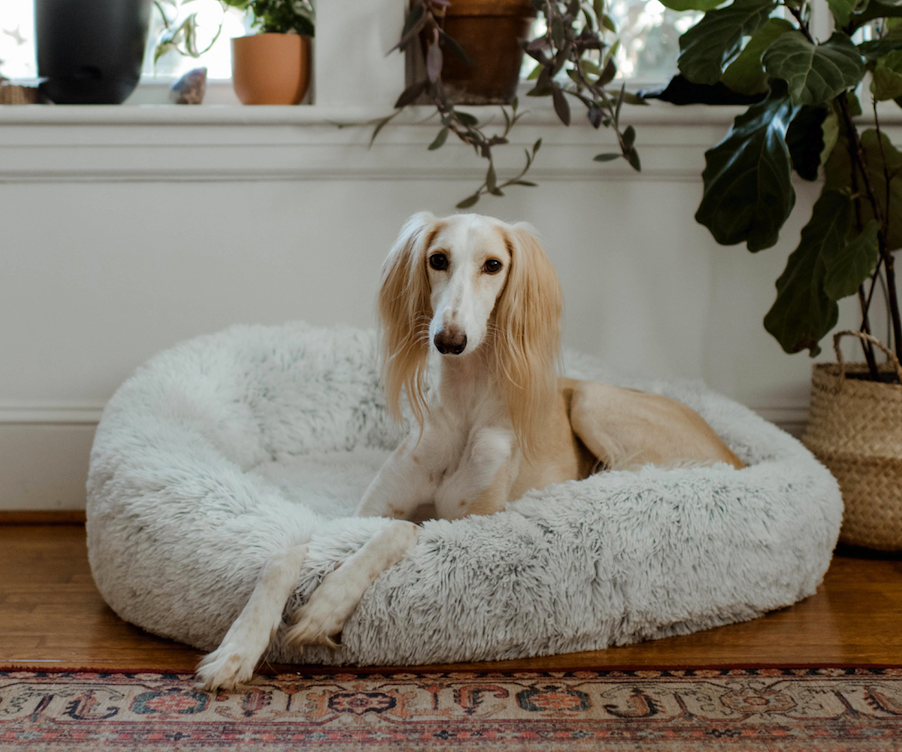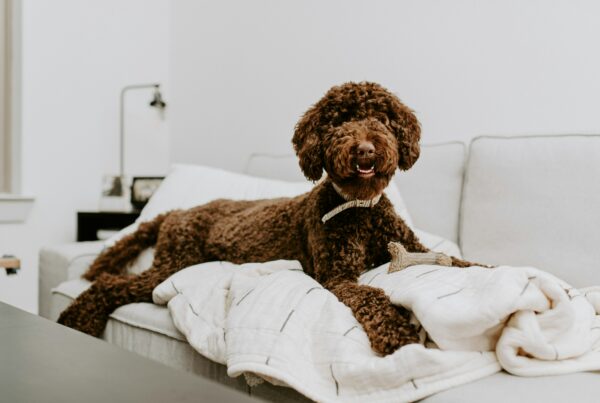Your dog’s favorite place to enjoy heavenly sleep gets dirty and has the potential to deteriorate his health. A dog bed is a home to dirt, dander, parasites (their eggs and larvae as well), feces and urine particles, saliva, etc. In addition to that, a dog sleeps for almost 13 hours a day and spends some more wake time resting in their bed. That being said, a dog’s bed should always be clean and hygienic for his better health and well-being.
Many pet parents don’t bother to clean their dog’s bed until it starts stinking to the extent that it isn’t ignorable anymore. But it shouldn’t be that way. Clean it every month at least. I’ll show you how you can clean the bed properly so that it isn’t only dirt-free but also is germ-free.
Remove Debris Before Washing It
Most dog beds are washable these days. Washing it will ensure that there are no germs or any kind of dirt is present. But before you start washing it, you need to remove as much dirt as possible.
Take the bed to the area which you don’t mind being dirty because the dirt falling from the bed will settle in the area which you will need to clean later. Preferably, you should do this job outdoors.
Turn the bed upside down and let big pieces of mud, dust, and other solid particles fall off. You can also use a broomstick to beat the bed in order to remove stuck particles. Check for any debris accumulated in crevices and remove it.
Use a vacuum cleaner to clean the flat surface as well as the corners and crevices. Clean up the flat surface with an upholstery attachment and the hard-to-clean surfaces with crevices attachment on. Vacuuming will remove debris quite well.
There still might be some dirt and dog hair stuck on the bed. If that’s the case, use lint rollers as a final step in removing tiny debris from the bed. If the bed is large, you may want someone to help you with the cleaning job.
Treat The Stain Spots
Locate the dirty patches on the bed and dampen it with a wet cloth. If there’s dried mud, it will fall off soon. You need to treat stains before you wash the entire bed using a pet-friendly detergent. This is because those tough stains will require more brushing and sometimes chemical spot treatments.
Stains are caused by your dog’s saliva, food, blood, vomit, wound, allergy spots, and wet paws. Use pet-friendly soap or detergent to treat the spot and wash it thoroughly using a toothbrush to ensure that there is no residue of detergent.
You don’t always need to use chemical spot treatments as they can cause a skin reaction in your pooch. However, if the stain is of blood or vomit of other dogs, you can use it. In that case, choose pet-friendly and chlorine-free bleach to treat stained spots. You can find it in a local pet store easily. And again, wash it thoroughly with plenty of water to ensure there’s no residue.
Wash Cover or Liner
Wash the cover and cushion of the bed separately. Also, make sure you don’t wash it with other clothes as it can make other clothes dirty. But if the cover or the liner is not removable, wash the whole bed the way you wash the cushion. Skip to the next section for washing cushions.
The most important thing is to read on the tag of the dog bed for what kind of washing is allowed and how much temperature it can withstand. If the tag is not present or the details are erased from it, check information on the dog bed’s company online.
Now fill a large tub with boiling water and immerse the liner inside it. A high temperature of boiling water will kill all germs including parasite eggs and larvae. However, please make sure that it doesn’t sit in the bath for quite long and also keep an eye on the liner to see it doesn’t start disintegrating.
Let it sit there for about five minutes and carefully take out the cover. Now wash it in a washer keeping all the instructions mentioned on the label in mind. But if instructions strictly ask for hand washing only, then wash it manually using pet-friendly detergent and brush. This can be the case, especially, with big dog beds for large dogs.
Read the tag for drying instruction, and if it has to be air-dried strictly, hang it on a rod and pin it so it doesn’t move from its place.
Wash Cushion
The cushions stay safe from stains especially if the bed liners are waterproof. However, it has germs and dirt and has to be washed carefully. If at all you see any stains, treat them before washing it entirely.
Soak the bed in a pool of boiling water (again check tag for washing instructions to make sure the bed does not deform). Add pet-friendly detergent to it and let the cushion soak until the temperature of the water is comfortable to work in it.
The hot water will kill any germs present inside the bed, and pet-friendly detergent will treat and ease up the dirt. Use a brush and clean the outer surface of the bed inside the water pool. Now, agitate and wring the bed to remove the dirt settled in the bed.
However, there’s no fixed time how long you should agitate it. Wring and agitate it under running water until dirt stops getting out from the surface of the bed. Then again, dry it as per the instructions.
Once it’s dry completely, fluff it and reassemble your dog’s bed. And it’s ready to be used again. Also, visit your vet for parasite treatment before using the bed again if you find flea dirt and other signs of parasite infestation while cleaning.
The method we’ve discussed here is vet recommended and appropriate. If you have any questions or want to share your experience with us then let us know about it in the comment section below.




